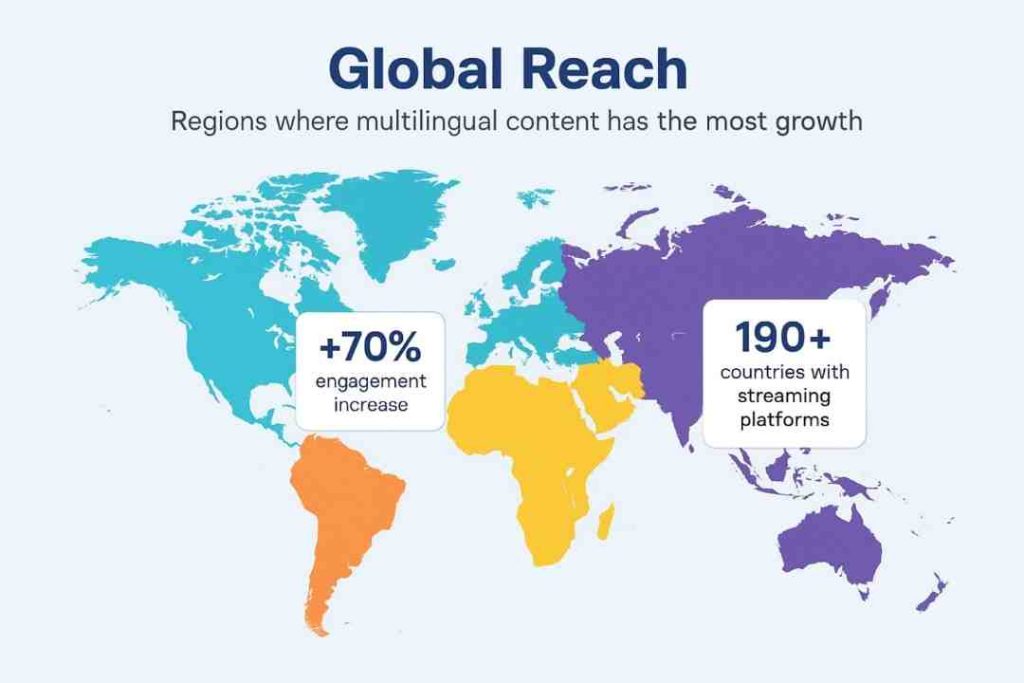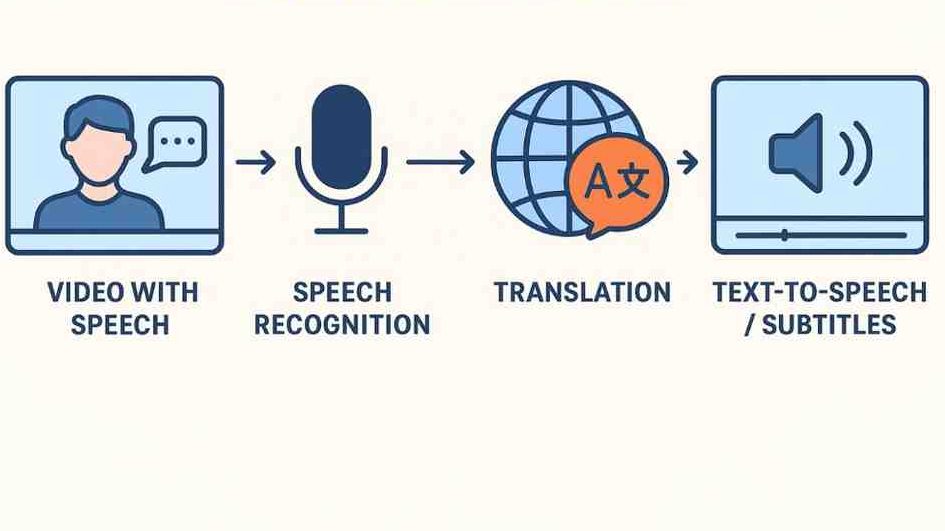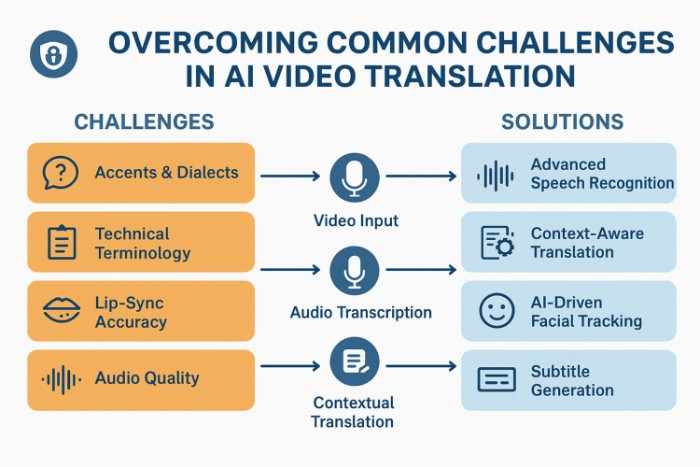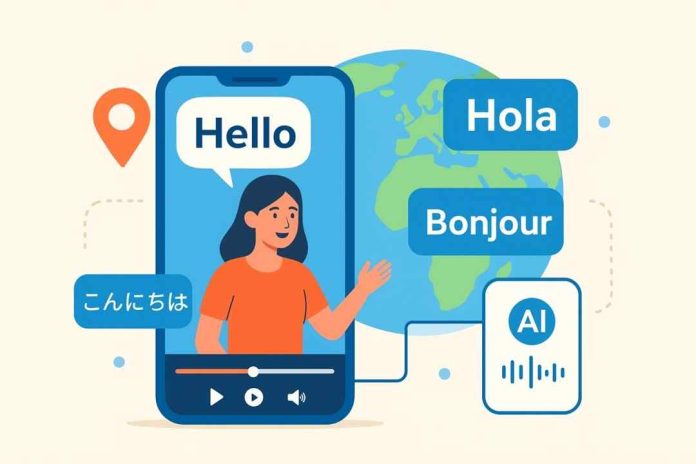In today’s digital world, content creators face a thrilling challenge: reaching people all over the globe. The AI-Powered Video Translator is a game-changer, helping break down language barriers and open up the world to more people. Now, thanks to new technology, businesses, teachers, and creators can make video content available in many languages instantly. These tools use advanced artificial intelligence to do more than just add subtitles—they create full multilingual communication strategies.
According to a Forbes report citing research by Wyzowl, 88% of buyers have been convinced to purchase by watching a brand’s video, and 73% noted clear benefits from video content. This shows how powerful localized video can be in influencing global audiences. When viewers can watch videos in their own language, engagement and trust increase dramatically.
Global content creation has entered a new era—language is no longer a barrier. Creators can now speak directly to audiences worldwide with ease and accuracy. The AI-Powered Video Translator is more than just technology; it’s a bridge connecting cultures, businesses, and ideas across borders.
Table of contents
- The Rise of Multilingual Video Content in a Connected World
- AI-Powered Video Translator: Transforming How We Communicate Across Borders
- How AI Video Translation Works in Real-Time
- Key Benefits of Using AI-Powered Translation for Video Content
- Industries Revolutionized by Automated Video Translation
- Overcoming Common Challenges in AI Video Translation
- Choosing the Right AI Video Translation Solution for Your Needs
- The Future of Global Content Creation with AI Translation Technology
- Conclusion
The Rise of Multilingual Video Content in a Connected World

The digital world has changed how we watch videos. Now, making videos in many languages is key to reaching more people. Creators and businesses see that using just one language cuts down on viewers. With an AI-Powered Video Translator, it’s easier than ever to adapt content for global audiences quickly and accurately.
Today, people around the world want content that speaks to them. Studies show that watching videos in their own language makes viewers more likely to stick around. This shift has led to a significant change in how content is produced across different countries, with AI-Powered Video Translators playing a central role in breaking language barriers and boosting engagement worldwide..
- YouTube reports over 2 billion logged-in monthly users worldwide
- Streaming platforms expand into 190+ countries
- Multilingual content increases viewer engagement by up to 70%
Small creators and businesses can now reach people worldwide. New translation tools have made it easier for anyone to make content that can be understood by many. Brands that use many languages can enter markets they couldn’t before.
The rise in video viewing worldwide underscores the importance of content in many languages. Sites like TikTok and Netflix show how fast content can spread when it’s in many languages. Creators who succeed know that speaking many languages is not just helpful, it’s essential in today’s connected world.
AI-Powered Video Translator: Transforming How We Communicate Across Borders
Video translation technology is changing how we communicate around the world. AI translation software is a key tool that helps break language barriers. It lets content creators share their work with people everywhere, easily and accurately.
Modern AI-driven video localization relies on several advanced technologies working together to create seamless, high-quality results. Natural language processing (NLP) enables deeper context understanding, ensuring translations capture tone, emotion, and cultural nuances. Machine learning algorithms continuously improve translation accuracy and efficiency by learning from feedback and past projects. Computer vision techniques help adapt visual elements, such as on-screen text or graphics, to match different languages and cultural contexts. Finally, speech synthesis technology produces authentic, natural-sounding voices that enhance viewer engagement and make localized videos feel more genuine.
Together, these technologies transform how content is adapted for global audiences, making the localization process faster, more innovative, and more immersive.
The magic of AI video translation is in its grasp of cultural and linguistic details. It’s different from old translation ways. These innovative systems can dynamically update content, keeping messages accurate and engaging for all audiences.
Big names like Netflix and YouTube are using these tools to reach more people. Schools and big companies are seeing how AI can cut down the time needed to create content for different places from weeks to hours.
AI video translators get better with time, thanks to vast amounts of language data. They can now catch idioms, local sayings, and meanings in context with great accuracy. This makes talking to people from other places feel more natural and easier than ever.
How AI Video Translation Works in Real-Time

Real-time translation has changed how we talk across language gaps. AI enables videos to be instantly translated into many languages. This happens with high accuracy.
The steps to translate videos in real-time are complex:
- Speech Recognition: Advanced AI algorithms capture spoken words, analyzing audio tracks with incredible precision
- Language Processing: Neural networks decode context and meaning beyond literal word translations
- Translation Engine: Sophisticated models transform original language content into target languages
- Voice Synthesis: AI regenerates translated text as natural-sounding speech
Machine translation does more than swap words. Modern AI understands language subtleties, syntax, and cultural context. It can handle different speakers, background noise, and accents.
For live streaming and video chats, translation is almost immediate. The tech keeps getting better. This makes talking in many languages easier and smoother than before. The latest AI translation tools can create subtitles and voice-cloned translations. They keep the original speaker’s tone and style.
Key Benefits of Using AI-Powered Translation for Video Content
Automated video translation has transformed how businesses and creators share their content with the world. Breaking down language barriers enables easy access to global audiences with impressive speed and efficiency. One of its most significant advantages is cost savings, creators can now translate videos into multiple languages without the high expenses of hiring translators and voice actors. Thanks to AI-driven solutions, even small teams and solo creators can expand internationally without straining their budgets, reducing translation costs by up to 70%.
Beyond affordability, AI translation tools allow content to scale rapidly across international markets while maintaining consistent brand messaging. The technology’s growing accuracy helps preserve linguistic nuances, ensuring that translated videos stay true to the original tone and meaning. As a result, content remains authentic, engaging, and culturally relevant for viewers everywhere.
AI-powered translation also enables simultaneous generation of multiple language versions of a video, drastically speeding up production timelines. This not only boosts audience engagement across global markets but also improves accessibility for non-native speakers. By adopting AI for video translation, creators can connect with diverse audiences worldwide and share their stories without limits. Share their messages, breaking down old barriers of language.
Industries Revolutionized by Automated Video Translation
Video localization has revolutionized how companies communicate with audiences worldwide. Breaking down language barriers enables businesses to connect with more people across industries such as education, entertainment, healthcare, and e-commerce.
In education, video localization plays a key role in spreading knowledge globally. Online learning platforms and training programs now offer content in multiple languages, allowing students everywhere to access high-quality learning materials. This approach helps e-learning platforms expand their global reach, makes corporate training programs internationally accessible, and ensures that academic resources transcend linguistic boundaries.
The entertainment industry has also been transformed by video localization. Streaming services and independent creators now translate and adapt their videos for international viewers, helping filmmakers and content creators engage with fans from diverse cultural backgrounds.
Healthcare and telemedicine have also seen significant benefits. Localized medical videos, patient education materials, and online consultations allow medical professionals to share expertise with global audiences. This not only enhances patient understanding but also makes healthcare information more inclusive and widely available, as telemedicine expands international accessibility.
In the world of e-commerce, translated videos and localized customer reviews have become powerful tools for driving sales. When businesses communicate with customers in their native languages, it builds authenticity, trust, and stronger engagement, ultimately leading to better global connections and growth.
Overcoming Common Challenges in AI Video Translation

AI video translation is growing, but it faces significant challenges. These affect how well translations are done and how users feel. People making videos and those translating them must work hard to ensure everyone can understand.
Some significant challenges in AI video translation are:
- Understanding complex sayings
- Keeping cultural context in subtitles
- Creating voice dubbing that sounds natural
- Dealing with different audio types
Getting translations right is a big problem. AI systems struggle to grasp concepts like humor, sarcasm, and regional dialects. Even though AI improves quickly, people still need to check translations to make sure they’re right. Voice dubbing is also tricky. Today’s tech can make fake voices, but they don’t feel as real as a human’s. New AI models are working to make voices sound more like those of real people.
Creating subtitles requires precision, timing, and thoughtful translation to ensure clarity and engagement. Practical approaches include using innovative translation tools to speed up the process, having language experts review translations for accuracy, and applying technology that automatically adjusts subtitle timing to match the audio. Building detailed dictionaries or glossaries for industry-specific terms also helps maintain consistency and quality across all videos.
By combining the latest AI advancements with human expertise, creators can overcome these challenges and produce subtitles that enhance viewer experience. This blend of technology and human insight makes videos more accessible, enjoyable, and easy to understand for audiences everywhere.
Choosing the Right AI Video Translation Solution for Your Needs
Finding the right video translation tools can change the game for sharing content globally. The best AI translation software can help your videos reach people around the world.
When looking at AI video translation solutions, keep these key points in mind:
- Language coverage and translation accuracy
- Voice quality and natural-sounding output
- Subtitle customization capabilities
- Integration with existing platforms
- Pricing models and scalability
First, think about what you need. Are you a content creator, marketer, or big company user? Different AI translation software meets different needs. Look for platforms that offer:
- Comprehensive language support
- High-quality voice dubbing
- Flexible pricing options
- User-friendly interfaces
- Robust customer support
If you’re watching your budget, try free trials and compare different tools. Focus on translation quality, ease of use, and potential return on investment. Some charge by the minute, while others have subscription plans.
Don’t forget about security and privacy. Make sure your chosen solution keeps your content safe and follows data protection laws. The top AI translation software combines new tech with easy-to-use features.
The Future of Global Content Creation with AI Translation Technology
Video translation technology is changing how we create content for the world. AI is making it easier to talk to people in different languages. This makes communication across the globe smoother than ever. New AI translation tools are set to change how we reach out to people worldwide. Some exciting advancements include:
- Advanced neural machine translation models that capture subtle contextual nuances
- Real-time translation capabilities for live streaming and video conferencing
- Emotion-aware voice synthesis that preserves speaker’s intent
- Visual translation technologies for graphics and on-screen text
These new technologies are making it easier for everyone to create content for the world. Small businesses and individual creators can now use top-notch translation tools. This was only available to big media companies before.
AI is also enabling the creation of immersive experiences in many languages. Creators who use these tools will lead the way in digital communication. They will change how we share and enjoy content worldwide. The future of content creation is looking more connected and without borders. Soon, being able to communicate in many languages will be key for digital creators.
Conclusion
The AI-Powered Video Translator is a game-changer. It breaks down language barriers like never before. Now, creators and businesses can connect with people worldwide. This technology changes how we share content across cultures. It makes communication more open and welcoming to everyone. Digital platforms are growing fast. Overcoming language gaps is key. The AI video translator lets creators reach out to viewers everywhere.
It helps organizations grow their audience globally. This way, they can have deeper connections with people from different cultures. Translation technology is more than just translating words. It understands the context and cultural details that enrich communication. AI does the heavy lifting, but creativity and strategy remain crucial.
The future of content is all about being multilingual and connected. Those who use AI translation tools will lead in global communication. As these tools get better, sharing ideas and stories will become even easier.











